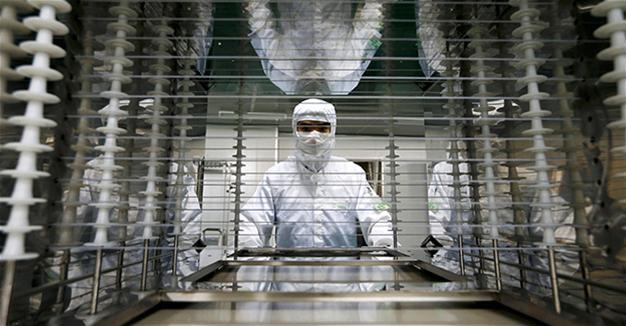China’s factory growth cools but construction boom fortifies economy
BEIJING - Reuters
 Growth in China’s manufacturing sector cooled slightly in July as foreign demand for Chinese goods slackened, but a government-led infrastructure push kept construction humming and helped prop up the world’s second-largest economy.
Growth in China’s manufacturing sector cooled slightly in July as foreign demand for Chinese goods slackened, but a government-led infrastructure push kept construction humming and helped prop up the world’s second-largest economy. The official Purchasing Managers’ Index (PMI) held above the 50-point mark that separates growth from contraction for the 12th straight month, as China poured funds into a construction boom that has fuelled demand for everything from cement to steel and other building materials.
But the broad consensus among China watchers is that economic growth will cool in coming months as a government crackdown on financial risks raises borrowing costs for businesses and squeezes profits.
The official PMI stood at 51.4 in July, the National Bureau of Statistics said on July 31, down from the previous month’s 51.7 and a touch below the 51.6 forecast in a Reuters poll.
Export orders, which helped Chinese factories stage a strong recovery in June, had ebbed this month, with manufacturers reporting slackening foreign demand. Overall factory production expanded less quickly compared with June.
New export orders slipped to 50.9 in July from 52.0 in June, helping drag the index for overall factory orders to 52.8 from 53.1.
“The breakdown suggests weaker foreign demand is partly to blame - the new export orders fell by a larger margin than overall new orders,” said Julian Evans-Pritchard, a Singapore-based China economist at Capital Economics.
While China’s foreign trade faces a mostly positive environment in the second half of the year, uncertainties still exist, Vice Commerce Minister Qian Keming said in Beijing on July 31.
The United States and China failed earlier this month to agree on major new steps to reduce the U.S. trade deficit with China, casting doubt over President Donald Trump’s economic and security relations with Beijing.
Domestically, the construction sector remained robust as the government stepped up investment in infrastructure projects. Separate data showed China’s steel sector in rude health, expanding in July at its fastest pace since April 2016.
The PMI reading on the construction sector showed a solid pickup to 62.5 in July from 61.4 in June.
Raw material inventories eased just slightly in July, according to the survey, while imports were almost steady and suggested stable domestic demand.
Activity at large factories gathered steam in July, with the sub-index for big manufacturers rising to 52.9 from 52.7.
A year-long construction boom helped China post stronger-than-expected economic growth of 6.9 percent in the first half of 2017.
But higher bank funding costs seen in the first half will filter through into the real economy eventually, while the red-hot property market moderates after waves of government cooling measures.
The increase in borrowing costs is expected to hit smaller firms harder. Indeed, a reading on medium-sized and small manufacturers showed activity contracted this month.
Growth in the services sector also cooled in July, falling to 54.5 from a three-month high of 54.9 in June, another official NBS survey found.
















